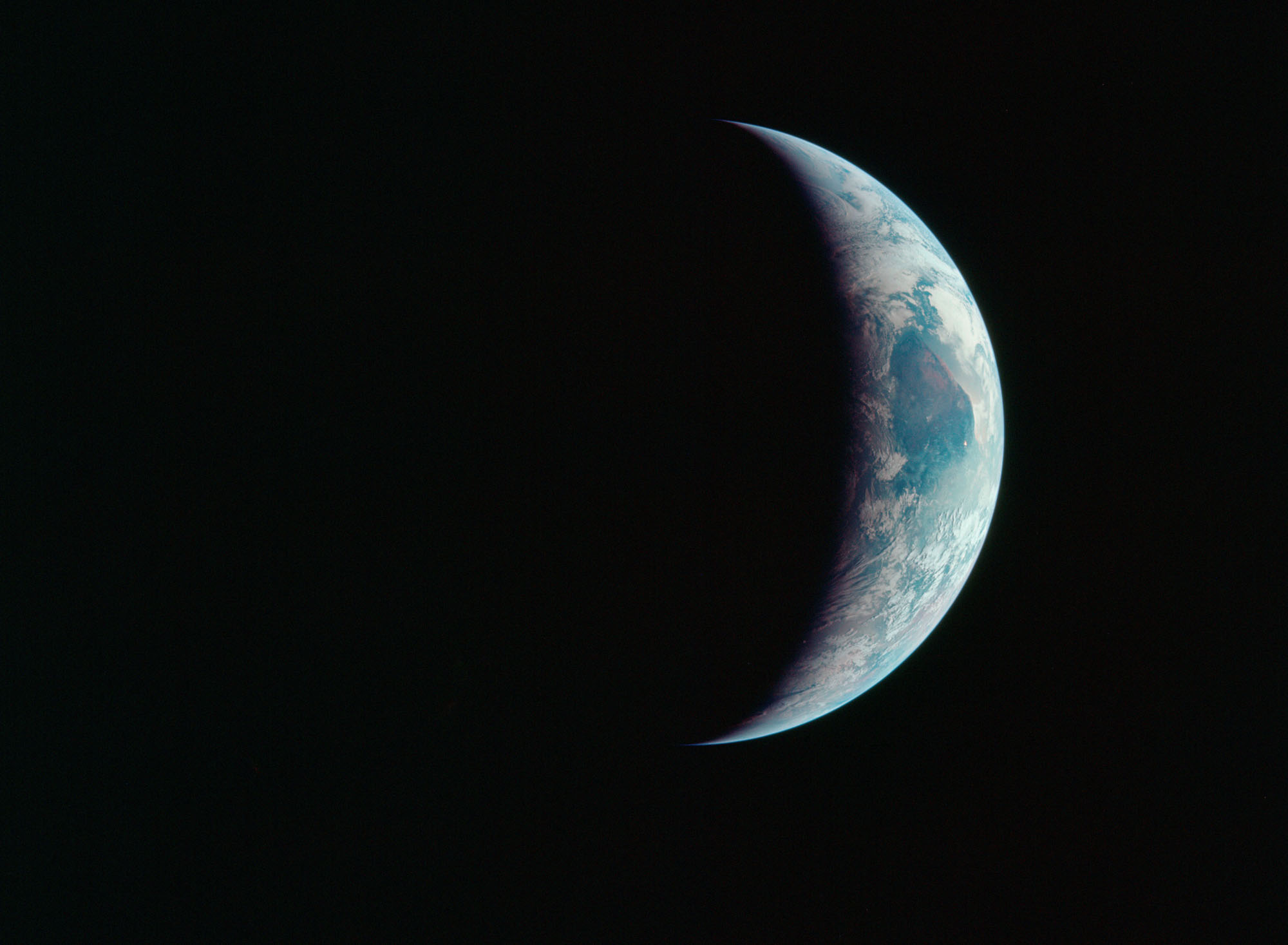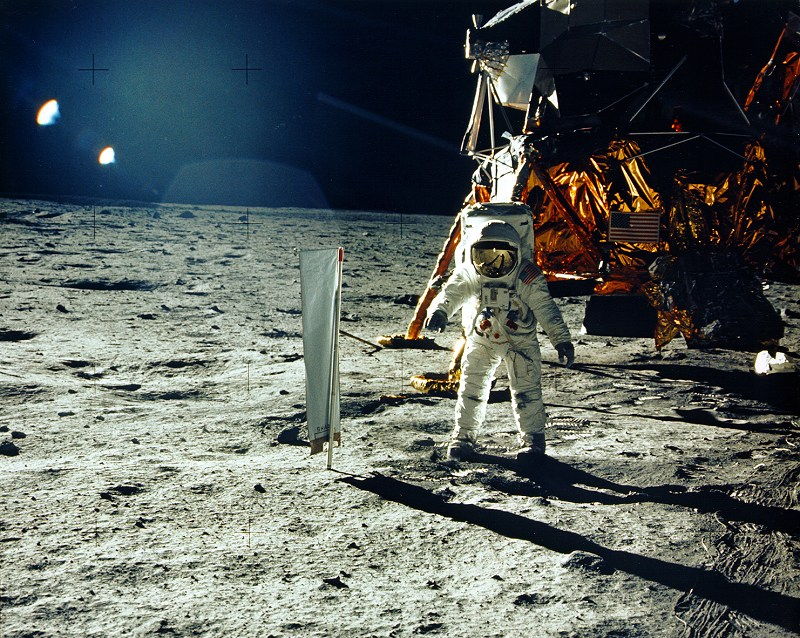Apollo 11 Flight Log, July 22, 1969: Firing Engines for Earth Return
Click unmute on the video above hear mission audio from Flight Day 7 of the Apollo 11 mission and listen to over 50 minutes of audio in the video from NASA below.
This summer marks the 50th anniversary of NASA’s Apollo 11 mission. Fifty years ago today (July 22), the Apollo 11 crew corrected course, fired their engines, and pushed off towards Earth. Here’s how it happened.
Just two days after landing on the moon, it was time for the Apollo 11 crew to make the journey back to Earth. Their lunar module, Eagle, was now jettisoned and the three men were inside their command module, Columbia, preparing to turn on the engines to head back home.
At 12:56 a.m. EDT, the crew did the "transearth injection burn" to bring them to a speed of roughly 3,600 miles per hour (5,850 km/hr). This maneuver put Neil Armstrong (commander), Michael Collins (command module pilot) and Buzz Aldrin (lunar module pilot) on a path back to Earth.
Related: The Weirdest Things Apollo Astronauts Left on the Moon
- Relive the Apollo 11 Moon Landing Mission in Real Time
- Apollo 11 at 50: A Complete Guide to the Historic Moon Landing
- Apollo 11 Moon Landing Giveaway with Simulation Curriculum & Celestron!
The Apollo 11 crew went to sleep at 4:30 a.m. EDT with their spacecraft coasting away from the moon, monitored by controllers in Houston at Mission Control. Their sleep period lasted until about 1 p.m. EDT, shortly before the spacecraft passed the spot where Earth's gravity took over from that of the moon. That location was about 38,900 miles (63,000 kilometers) from the moon and 200,000 miles (322,250 kilometers) from Earth.

While examining the trajectory of Columbia in Mission Control, the team determined it was best for the astronauts to do a midcourse correction to bring them on the correct path to Earth. The astronauts fired Columbia's engines at 4:02 p.m. to readjust the flight. Five hours later, the crew did a short television broadcast to Earth, lasting about 18 minutes.
Get the Space.com Newsletter
Breaking space news, the latest updates on rocket launches, skywatching events and more!

July 21, 1969: Launching from the Moon
July 20, 1969: The Moon Landing
July 19, 1969: Live TV from Near the Moon
July 18, 1969: Entering the Moon's Gravity
July 17, 1969: Course Correction to Reach the Moon
Editor's note: This feature, originally posted in 2014, has been updated for the 50th anniversary of the Apollo 11 mission. Space.com contributor Chelsea Gohd contributed to this report.
Follow Elizabeth Howell @howellspace, or Space.com @Spacedotcom. We're also on Facebook and Google+.
Join our Space Forums to keep talking space on the latest missions, night sky and more! And if you have a news tip, correction or comment, let us know at: community@space.com.

Elizabeth Howell (she/her), Ph.D., was a staff writer in the spaceflight channel between 2022 and 2024 specializing in Canadian space news. She was contributing writer for Space.com for 10 years from 2012 to 2024. Elizabeth's reporting includes multiple exclusives with the White House, leading world coverage about a lost-and-found space tomato on the International Space Station, witnessing five human spaceflight launches on two continents, flying parabolic, working inside a spacesuit, and participating in a simulated Mars mission. Her latest book, "Why Am I Taller?" (ECW Press, 2022) is co-written with astronaut Dave Williams.









